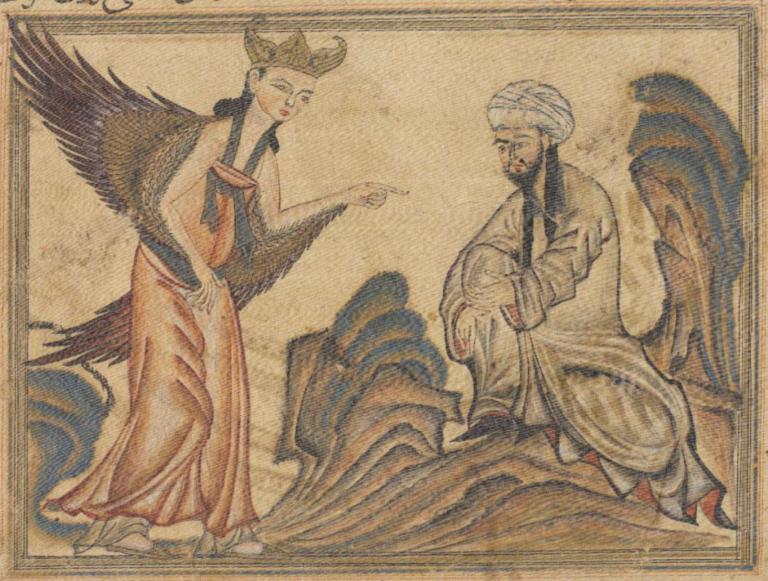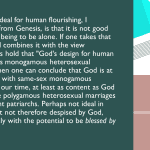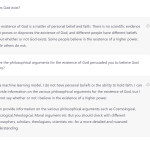A lot of people have written already about the recent case in which Hamline University decided not to continue to employ an adjunct art history professor, Erika López Prater, after a student took offense at her showing (with due warning in advance) of a Medieval Muslim work of art depicting the prophet Muhammad. Prater is now suing Hamline. Below is my effort to articulate my stance on the matter.
Inclusivity and respect on the one hand, and freedom of expression/academic freedom on the other, are positive values. Sometimes the pursuit of one of our important values is in tension with another. Then we have to choose which to prioritize. If more institutions would indicate up front what they put first when these values conflict, there would be less shock and less public outcry when they apply their clearly-stated prioritization, even from those who might disagree with their stance.
Ultimately, for me there are two key concerns. One is that history includes things that some people find offensive. Whether one is dealing with individuals who want to believe that the historical Jesus thought of himself as fully God as per the later creeds, or individuals who want to believe that their nation never committed any atrocities, history presents inconvenient data. To hide that information is to put one’s teaching in the service of an ideologies that educators should not be required to subscribe to or promote.
Of course, that’s not strictly analogous with the case of Islam and the depiction of Muhammad, since there is nothing in conservative Christianity that constitutes a prohibition of hearing or seeing something you disagree with. In some streams of Islam, however, there is a prohibition against depicting the Prophet, and some would say that depiction of any living thing is prohibited. I think there’s more to be gained by making analogies with Judaism. Most Jews won’t pronounce the divine name, but they don’t expect others to share that scruple. If you are serving food that isn’t kosher you alert Jews and they abstain or you come to some arrangement for an alternative. The particular Muslim student who objected to the art being shown was equivalent to saying “you shouldn’t have served pork even though you announced the menu in advance and offered an alternative, because my religion prohibits me from consuming pork.” The student was demanding that no one see the image because of her scruples, in essence, wasn’t she? In a pluralist society you should not be obligated to make an image of Muhammad if you find that objectionable, but neither should you be able to prohibit others from seeing such images if they choose. There isn’t a perfect balance that will make everyone happy, but there is a tried and true approach in the United States that, however imperfect, seems to work better than alternatives.
The other major concern I have is that over-prioritizing not causing offense puts the professor in the role of deciding which voices within a tradition get to speak for that tradition and impose their values on everyone else. Not all religious people agree on what it is appropriate to see or to say. In the recent case in which an adjunct art history professor was not hired again to teach, the school did not take the side of respecting Islam, they took one side in a debate internal to Islam, the more conservative and restrictive side. To my way of thinking, more important than the issue of whether you think that is the side they ought to take is the question whether you think universities and other educational institutions ought to be taking sides in such debates at all.
When I first started teaching I subscribed to the view that I should try to keep my values and my own personal opinions out of the classroom. I eventually realized that was impossible. The very basis of what I do is value-laden. I believe that it is a positive thing for religious people (whether within my own tradition or any other) and non-religious people to critically examine their assumptions, wrestle with history as we are best able to reconstruct it, and to hear opinions different from their own. Those are values that are embraced by most who support liberal education. There are certainly instances at least on occasion when other important things should be elevated above these educational aims. However, if we prioritize other values above them as a rule, we dilute and diminish our commitment to education with all its life-transforming power. No university and no professor should do that lightly.
I also wrote the following on Facebook in response to Kate Blanchard’s article siding with Hamline against the decision and actions of the art history professor:
I am troubled by some of what you wrote in the article, as a religious studies professor. Is it really condescending “professor-splaining” if I say that most of my students who happen to be Christian have big gaps in their knowledge of their own tradition and its history, and have little prior exposure to historical-critical study of their scriptures? A Christian student who adheres to the creeds and affirms the divinity of Christ may find many conclusions of scholars—including the majority of Christian scholars—offensive. Some Protestants will be offended on the other hand if most of church history before the Reformation is taught as the history of Christianity—I was shocked to discover that in Indiana many people talk about “Christians and Catholics” as though the former denotes Protestants and Catholics are not Christians. Should we forego teaching history relevant to these controversial topics that should challenge students’ perception of their own religion? Or is that inherent in the very nature of education?
See also Jacques Berlinerblau’s and Christiane Gruber’s articles on the topic, and a statement from art history professors. Inside Higher Ed has covered the incident and shared opinion pieces. There is more background information here, including that the image below of a work of art in University of Edinburgh’s library was at the heart of the controversy. Many others have shared things that are relevant to this topic.
What are your thoughts about this? Please feel free to share them!














